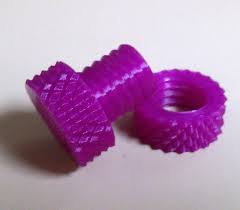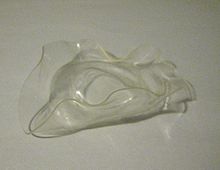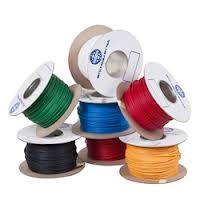Poly Lactic Acid is a thermoplastic aliphatic polyester derived from renewable resources, such as corn starch (in the United States), tapioca roots, chips or starch (mostly in Asia), or sugarcane (in the rest of the world).
The name “polylactic acid” or “poly lactic acid” does not comply with IUPAC standard nomenclature, and is potentially ambiguous or confusing, because PLA is not a polyacid (polyelectrolyte), but rather a polyester.
Poly Lactic Acid Possible Uses
Being able to degrade into innocuous lactic acid, PLA is used as medical implants such as screws, pins, rods, and as a mesh. Depending on the exact type used, it breaks down within the body within 6 months to 2 years. This gradual degradation is desirable for a support structure, because it gradually transfers the load to the body (e.g. the hopefully healed bone).
PLA can also be used as a compostable packaging material, either cast, injection molded, or spun. Cups (for cold and room temperature applications) and bags have been made of this material. In the form of a film, it shrinks upon heating, allowing it to be used in shrink tunnels. It is useful for producing loose-fill packaging, compost bags, food packaging, and disposable tableware. In the form of fibers and non-woven textiles. PLA also has many potential uses, for example as upholstery, disposable garments, awnings, feminine hygiene products, and diapers.
Poly Lactic Acid Probable Features;
Poly Lactic Acid is good first test run material to get started with when you first start 3D printing. It has a very sharp glass transition point so if you use a fan to cool it on printing it will set to solid very quickly. This has the advantage of achieving a greater range of geometries than would be possible with other polymers and it also reduces the thermal stress on the printed part so warping is much less of an issue in larger parts when you 3D print with PLA. PLA can be post-production finished by sanding and spraying with automotive spray filler. You can also paint directly onto PLA with acrylic paints.
It is harder then PTFE and melts at a lower temperature (around 180°C to 220°C), and a glass transition temperature between 60-65 °C, so is potentially a very useful material.

Poly Lactic Acid Possible Disadvantages;
Due to PLA’s relatively low glass transition temperature, Poly Lactic Acid cups cannot hold hot liquids. However, much research is devoted to developing a heat resistant PLA.
It does exhibit higher friction than PTFE however which can make it difficult to extrude and more susceptible to extruder jams.

PLA – Poly Lactic Acid some available colors;
Solid: black, white, purple, yellow, blue and green, translucent: clear, red, blue and green.
A message from the owner:
I’m here to assist inventors, companies and organizations with all their 3D Printing and Fast Track Prototyping needs. I will find you expert 3D Printing and Fast Track Prototyping Printing solutions.
Thanks for taking the time to view this website.
I look forward to hearing from you,
Anthony
71-366-9000
